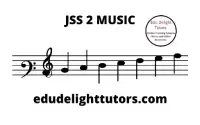Geometric Construction Circles Basic Technology JSS 2 First Term Lesson Notes Week 11
Basic Technology JSS 2 First Term Lesson Notes Week 11
Subject: Basic Technology
Class: JSS 2
Term: First Term
Week: 11
Age: 12 years
Topic: Circles
Sub-topic: Definition, Types and Parts of a Circle; Construction of Targets and Normals to a Given Circle and Two Equal and Unequal Circles
Duration: 40 minutes
Behavioural Objectives:
By the end of the lesson, students should be able to:
- Define a circle and identify its parts.
- Construct various types of circles and targets.
- Draw normals to a circle and between equal and unequal circles.
Keywords:
- Circle: A round shape with all points equidistant from the center.
- Radius: The distance from the center to any point on the circle.
- Diameter: A straight line passing through the center, connecting two points on the circle.
- Chord: A line segment whose endpoints lie on the circle.
- Tangent: A line that touches the circle at exactly one point.
Set Induction:
The teacher engages students by discussing where circles appear in real life, such as wheels, coins, and clocks, to spark interest.
Entry Behaviour:
Students should have basic knowledge of geometric shapes and previous lessons on triangles.
Learning Resources and Materials:
- Compass
- Ruler
- Protractor
- Pencil
- Sketching paper
- Circle models
Building Background/Connection to Prior Knowledge:
Students will connect their knowledge of triangles to circles, enhancing their understanding of geometric constructions.
Embedded Core Skills:
- Practical skills in geometric construction
- Analytical skills for understanding shapes
- Collaborative skills through group work
Learning Materials:
- Geometry textbooks
- Visual aids for parts of circles
Reference Books:
- Lagos State Scheme of Work
- Basic Technology for Junior Secondary Schools by NERDC
Instructional Materials:
- Whiteboard and markers
- Visual aids showing circle constructions
Content:
I. Definition of a Circle
- A circle is a shape consisting of all points in a plane that are at a given distance (radius) from a fixed point (center).
II. Types and Parts of a Circle
- Types of Circles:
- Concentric Circles: Circles that share the same center but have different radii.
- Eccentric Circles: Circles that do not share the same center.
- Parts of a Circle:
- Center: The fixed point inside the circle.
- Radius: The distance from the center to the circle’s edge.
- Diameter: Twice the radius; it passes through the center.
- Chord: A line segment connecting two points on the circle.
- Tangent: A line that touches the circle at only one point.
- Secant: A line that intersects the circle at two points.
III. Construction of Targets and Normals
- Constructing Targets:
- Draw a circle with a compass.
- Mark concentric circles around it using different radii.
- Drawing Normals to a Circle:
- Use a compass to find the radius.
- Draw a tangent line at the point of contact, ensuring it meets the circle at one point only.
- Constructing Two Equal Circles:
- Draw two circles with the same radius.
- Ensure they are positioned to either overlap or touch each other.
- Constructing Two Unequal Circles:
- Draw circles of different radii.
- Position them as required (either touching or apart).
15 Fill-in-the-Blank Questions:
- A circle is defined as the set of points that are ______ from the center.
a) Unequal
b) Equidistant
c) Random
d) Different - The distance from the center to the edge of the circle is called the ______.
a) Diameter
b) Chord
c) Radius
d) Secant - The diameter of a circle is ______ times the radius.
a) One
b) Two
c) Three
d) Four - A line that touches a circle at exactly one point is called a ______.
a) Secant
b) Chord
c) Tangent
d) Diameter - A chord that passes through the center of the circle is called a ______.
a) Radius
b) Tangent
c) Diameter
d) Arc - Concentric circles have ______ centers.
a) Different
b) No
c) The same
d) Two - A secant intersects the circle at ______ points.
a) One
b) Two
c) Three
d) Four - To construct a target, you need to draw ______ circles.
a) Concentric
b) Equal
c) Unequal
d) Straight - The center of a circle is always located ______.
a) Outside
b) Inside
c) Above
d) Below - A tangent line meets the circle at ______ point(s).
a) No
b) One
c) Two
d) Three - The ______ is a line segment whose endpoints are on the circle.
a) Radius
b) Chord
c) Diameter
d) Tangent - To draw a normal to a circle, you need to find the ______ point of contact.
a) Two
b) One
c) Three
d) Four - Eccentric circles do not share the same ______.
a) Arc
b) Radius
c) Diameter
d) Center - The area between the radius and the diameter is called the ______.
a) Circumference
b) Segment
c) Chord
d) Sector - The angle formed between a radius and a tangent at the point of contact is a ______ angle.
a) Right
b) Acute
c) Obtuse
d) Reflex
15 FAQs with Answers:
- What is a circle?
A circle is a round shape with all points equidistant from a center. - What is the difference between a radius and a diameter?
The radius is half the diameter; the diameter is twice the radius. - How do you construct a tangent to a circle?
Draw a line that touches the circle at one point without crossing it. - What are concentric circles?
They are circles that share the same center but have different sizes. - What is a chord?
A chord is a line segment whose endpoints lie on the circle. - Can two circles overlap?
Yes, circles can overlap or be positioned apart. - What tools do you need to draw a circle?
You need a compass, ruler, and pencil. - What is an inscribed circle?
It’s a circle that fits inside a triangle and touches all three sides. - How can you find the center of a circle?
You can measure the radius from any point on the circle. - What is the purpose of constructing targets?
They help in understanding concentric circles and their properties. - What do you call a line that intersects a circle at two points?
It’s called a secant. - Why are circles important in geometry?
They have many applications in design, construction, and mathematics. - What do you mean by normals to a circle?
Normals are lines that meet the circle at a right angle. - How do you draw two equal circles?
Use the same radius and position them to either touch or overlap. - What is the relationship between tangents and circles?
A tangent touches a circle at one point and is perpendicular to the radius at that point.
Presentation Steps:
Step 1:
The teacher revises the previous topic on triangles and their properties.
Step 2:
The teacher introduces the new topic by explaining the definition of a circle and its parts.
Step 3:
The teacher allows pupils to contribute, discussing their experiences with circles and correcting them where necessary.
Teacher’s Activities:
- Demonstrate circle constructions and the drawing of normals.
- Monitor students as they practice and provide guidance.
- Discuss real-life applications of circles in design.
Learners’ Activities:
- Practice constructing circles and targets.
- Collaborate in pairs to share techniques and results.
- Label the parts of their sketches.
Assessment:
- Define a circle.
- What are the parts of a circle?
- How do you construct a tangent to a circle?
- Explain concentric circles.
- What is a chord?
- Identify the center of a circle.
- Describe the difference between a radius and a diameter.
- What are equal circles?
- How do you draw a normal to a circle?
- Why are circles important in geometry?
Conclusion:
The teacher goes around to mark the students’ work, offering feedback and reinforcing the key concepts of the lesson
More Useful Links
Related
Related posts:
- Material and Their Common Uses Exploring Everyday Materials: Ceramics, Rubber, and Plastics Basic Technology JSS 2 First Term Lesson Notes Week 4
- Geometrical Construction Understanding Geometric Lines: Construction and Application Basic Technology JSS 2 First Term Lesson Notes 5
- Geometrical Construction Angles Exploring Angles: Definition, Types, and Practical Uses Basic Technology JSS 2 First Term Lesson Notes Week 6
- JSS 2 Basic Technology First Term Examination
- Basic Technology JSS 2 First Term Lesson Notes
Related Posts

Intonation Patterns Indirect and Direct Speech Expository Essay

MAJOR SCALES
JSS 2 THIRD TERM LESSON NOTE PLAN BASIC SCIENCE
About The Author
Edu Delight Tutors
Am a dedicated educator with a passion for learning and a keen interest in technology. I believe that technology can revolutionize education and am committed to creating an online hub of knowledge, inspiration, and growth for both educators and students. Welcome to Edu Delight Tutors, where learning knows no boundaries.